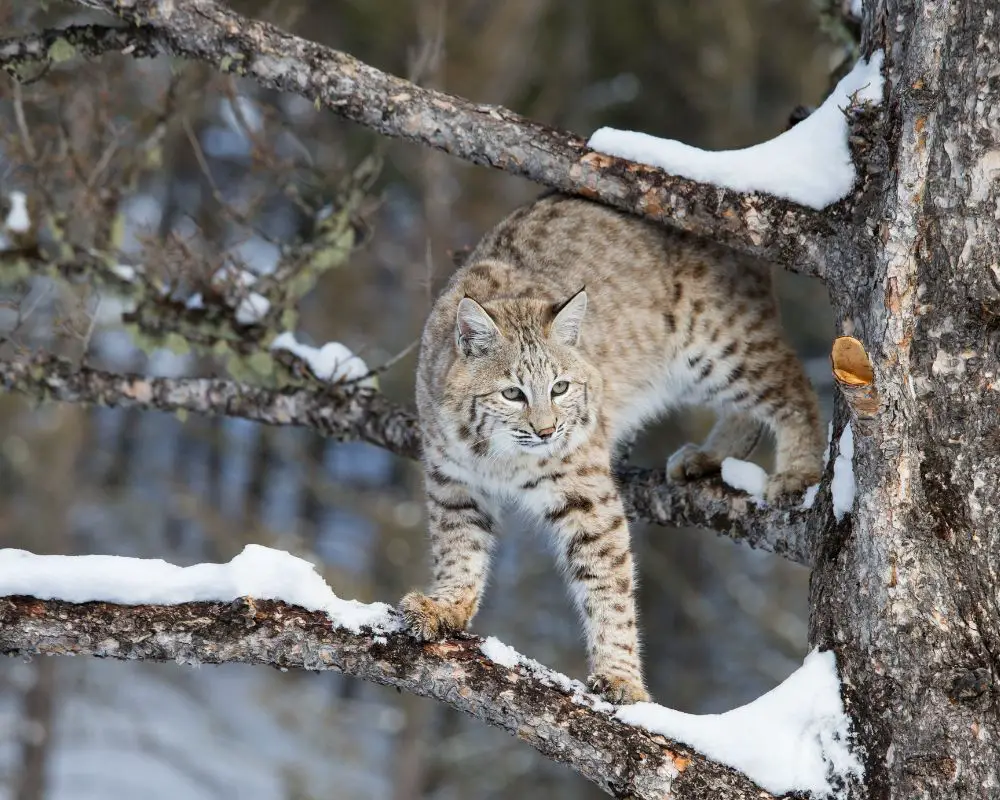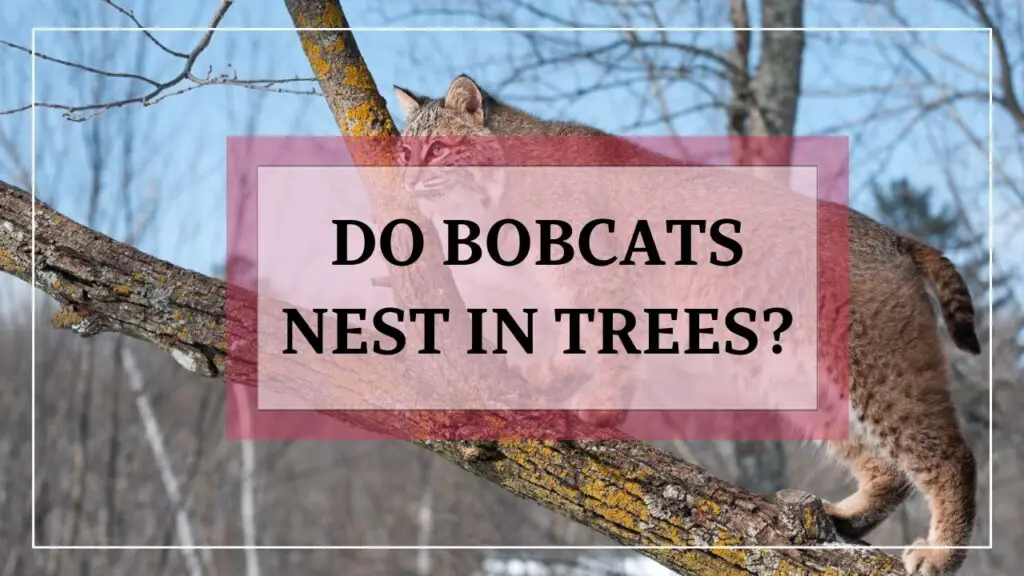If you’re curious about the elusive and fascinating bobcat, you’re not alone. As a top predator in many ecosystems, these small wild cats have captured the imaginations of people around the world. But as with any mysterious animal, there are plenty of myths and misconceptions that can make it difficult to separate fact from fiction.
One of the most persistent questions people have about bobcats is whether they nest in trees. After all, many other animals use trees for various purposes, from birds to bears. But is this behavior really common among bobcats, or is it just another tall tale?
While bobcats may occasionally climb trees for hunting or to escape danger, they do not typically use trees for nesting or denning. Bobcats are known for using a variety of different habitats and structures for nesting and denning, such as caves, rock crevices, burrows and dens in the ground, brush piles, fallen logs, and dense vegetation. However, trees do play an important role in bobcat habitat and behavior, providing cover and shade, supporting prey species, and acting as wildlife corridors.
Now, let’s dive more into the hidden facts behind this answer:
Bobcat Basics

Before we dive into the question of whether bobcats nest in trees, let’s take a moment to review some basic information about these animals that will help us in answering our question.
Bobcats are incredibly adaptable and can thrive in a wide range of habitats, from deserts and grasslands to forests and swamps. They are typically solitary animals, although they may share territories with other bobcats, and they are most active at night.
As top predators, bobcats play a crucial role in maintaining the ecological balance in many ecosystems. They primarily hunt small mammals, such as rabbits, rodents, and squirrels, but they are also known to prey on birds, reptiles, and even deer in some areas. Bobcats are opportunistic hunters and will take advantage of any available food source.[1]
While bobcats are not considered endangered, they do face some threats from habitat loss, hunting, and other human activities. Understanding their behavior and habitat needs is essential for ensuring their long-term survival.
Now that we have a better understanding of who bobcats are and what they do, let’s turn to the question of whether they nest in trees.
Do Bobcats Nest in Trees? The Truth
In fact, bobcats are known for using a variety of different habitats and structures for nesting and denning, depending on the availability and suitability of the local environment. Some of the most common types of bobcat nests include:
- Caves and rock crevices
- Burrows and dens in the ground
- Brush piles and fallen logs
- Dense vegetation, such as shrubs and thickets
While bobcats may occasionally climb trees for various purposes, such as hunting or escaping danger, they do not typically use trees for nesting or denning. This is because trees do not provide the kind of secure and secluded environment that bobcats need for raising their young and resting.
Evidence And Examples
Of course, as with any wild animal, there may be some individual variation in bobcat behavior. Some researchers have reported finding bobcats using trees for nesting or resting in rare cases. However, this is not a common behavior and is not representative of the species as a whole.
So while the idea of bobcats nesting in trees may be a popular one, the truth is that they have many other nesting habits that are better suited to their needs. In the next section, we’ll explore the relationship between bobcats and trees in more detail and why they might still use trees for certain purposes.
Bobcats and Trees: A Complex Relationship

While bobcats do not typically nest in trees, they still have a complex relationship with these tall, woody structures. Trees play an important role in bobcat habitat and behavior and understanding this relationship can give us valuable insights into the lives of these fascinating animals.
For example, bobcats are known to use trees for a variety of purposes, such as:
- Hunting: Bobcats are skilled climbers and can use trees as vantage points to scan their surroundings for prey. They may also climb trees to ambush prey, especially birds and squirrels that are high up in the canopy.
- Traveling: Bobcats are capable of jumping up to 10 feet vertically and 12 feet horizontally, which allows them to leap from tree to tree in some cases. This can be an efficient way to move through their territory, especially if there are obstacles on the ground.
- Escaping danger: Bobcats are preyed upon by larger predators, such as coyotes and mountain lions, and may climb trees to escape from danger or to protect their young.
Do Trees Provide Any Habitat Features To Bobcats?
In addition to these specific behaviors, trees also provide important habitat features for bobcats, such as:
- Cover: Trees can provide cover and shade for bobcats, especially in areas where there is limited ground cover or other structures. This can be important for reducing stress and conserving energy.
- Prey habitat: Trees can also provide habitat for the prey species that bobcats rely on, such as rodents and birds. By providing suitable habitats for these species, trees indirectly support bobcat populations.
- Corridors: Trees can act as important wildlife corridors that connect different habitats and allow animals to move between them. This can be especially important for bobcats, which may need to move through a variety of habitats to find food, mates, and suitable nesting sites.
So while bobcats do not nest in trees, they still have a complex and important relationship with these structures. By providing a range of benefits and habitat features, trees help support healthy bobcat populations and contribute to the overall health and balance of many ecosystems.
Conclusion
In conclusion, while bobcats do not typically nest in trees, they still have a fascinating and complex relationship with these structures. From using trees as vantage points for hunting to using them as corridors for travel, trees play an important role in the lives of these elusive predators.
Understanding their behavior and habitat needs is essential for ensuring their long-term survival, and the more we learn about the link between bobcats and trees, the better equipped we are to protect these majestic animals and the ecosystems they inhabit. By separating fact from fiction and exploring the truth about bobcats and trees, we can deepen our appreciation for these amazing creatures and the vital role they play in the natural world.

